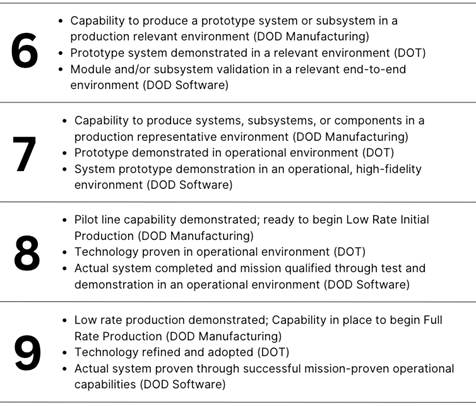EDA Tech Hubs: Tips for Arkansas Proposers
July 18, 2023On May 12, 2023, the U.S. Economic Development Administration (EDA) released a notice of funding opportunity (NOFO) for a new program that was authorized under the CHIPS+ and Science Act.
For a refresher on the CHIPS+ Act, check out our earlier blog post on the topic.
The new program is called the Regional Technology and Innovation Hubs, or Tech Hubs for short, and many communities are buzzing with interest. The program will offer two phases, and Phase 1 is currently open. Proposals will be submitted through an online portal and are due by 11:59pm ET on August 15, 2023.
AEDC will help interested applicants find collaborators in their regions and support competitive applicants from Arkansas however we can.
All proposals will have to choose one of three ‘tracks’ when applying. These tracks are based on how many pieces of the ideal “Tech Hub” ecosystem are already in place. Option 1 is for receiving the Phase 1 designation and does not come with any funding. The Phase 1 designation is required in order to get funding later on. This option is for proposers who can demonstrate to the EDA that the region described in the proposal is ready for Phase 2 and doesn’t need any additional support or funds to organize before the Phase 2 solicitation comes out later this year. Option 2 is for receiving the designation plus a ‘strategy development grant’ which would provide some funds to help a region get more organized. If your region has most of the pieces together to apply for Phase 2 but could use a little more coordination and can demonstrate in the proposal that a small push will get you across the finish line, this option is for you. Option 3 is only for the strategy development grant, which means your region is really optimistic and you want to pursue Phase 1 designation in a later round, but the various components and collaborators need to be organized (there will likely be additional solicitations each year through FY27).
There are a very small number of proposals that could successfully compete for the designation this year – I encourage proposers to seek the strategy development grants and use the opportunity to develop a cohesive plan for future funding (Option 3 described above). This is mostly because of the NOFO requirements related to technology readiness, which is discussed below. Remember, this is a marathon and not a sprint. The Tech Hubs program and Recompete program are the main CHIPS+ activities for the EDA, and the original allocation of funds for both programs over five years was more than $10 billion. While that amount has not yet been appropriated, EDA only plans to award up to $500 million total this year, reserving most of the funding. This year is really a pilot program, I anticipate they are waiting to see what the responses look like to better inform the program.
Now to the main course – what exactly is the EDA hoping to fund? According to the NOFO, the goals of this program are “to strengthen U.S. economic and national security through place-based investments in regions with the assets, resources, capacity, and potential to become globally competitive, within approximately 10 years, in the technologies and industries of the future - and for those industries, companies, and the good jobs they create to start, grow, and remain in the United States. The Tech Hubs Program will support the modernization of United States manufacturing and improve commercialization and domestic production of innovative research.”
What kind of manufacturing in particular? The NOFO includes a list of the key technology focus areas (KFTAs) that all proposals have to choose from. Proposals can choose one area, or the intersection of multiple areas. Your proposal can’t be as broad as these categories- you should describe some specific examples and include specific collaborators within your chosen KFTA.
Here’s the list:
- Artificial intelligence, machine learning, autonomy, and related
- High performance computing, semiconductors, advanced computer hardware and software
- Quantum information science and technology
- Robotics, automation, and advanced manufacturing
- Natural and anthropogenic disaster prevention or mitigation
- Advanced communications technology and immersive technology
- Biotechnology, medical technology, genomics, and synthetic biology
- Data storage, data management, distributed ledger technologies, cybersecurity, biometrics
- Advanced energy and industrial efficiency technologies, such as batteries and advanced nuclear technologies
- Advanced materials science, including composites 2D materials, other next-generation materials, and related manufacturing technologies
Other important details to note are the focus on place-based investments, and the time frame – within 10 years. EDA is looking for collaborative, regional proposals with representation from multiple specific sectors that will support the translation of technologies into the commercial market to quickly impact a region’s economy. The NOFO is explicit on which stages of technology development the Hubs should focus on. They want to supercharge the innovation economy by moving technologies upward from Technology Readiness Level 6 through 9. That means any group applying for the Phase 1 Designation should be able to clearly demonstrate that existing resources are in place to transition a relevant technology from TRL 6 to 7 to 8 and to 9. You should be able to describe exactly how it will work in between each TRL. Also, you should be able to show that there are enough technologies in the pipeline to keep things moving.
The Technology Readiness Level (TRL) guidelines are managed by the U.S. Government Accountability Office and published in the Technology Readiness Assessment Guide. These guidelines are used by multiple agencies including NASA, the Department of Defense (DOD), Department of Transportation (DOT) and others. There is no set definition across every federal agency for each level, but there are examples, which are summarized below. The full TRL guide can be found at this link.

The Tech Hubs program does NOT want to support activities that fall under readiness levels 1 through 5. In general, level 1 is basic research, 2 is use-inspired research, 3 is proof-of-concept development, 4 is proof-of-concept validation, and 5 is early prototype validation. After reading about the TRLs, I encourage you to assess (as comprehensively as possible) whether or not your region has both a stacked pipeline of intellectual property at TRLs 2 through 5 AND existing infrastructure and resources to move things from 6 through 9.
Another important requirement is the broad cross-sector collaboration. All proposals must come from consortia, or groups of people and organizations, with representatives from at least the following categories: higher education, including two- and four-year colleges and universities; state or local government agencies, or municipalities; industry, including companies in the proposal’s selected technology areas; economic development organizations, loosely defined as focused on improving science, technology, innovation, entrepreneurship, or access to capital; and labor organizations or workforce training firms, including local workforce boards. These requirements mean that each proposal should include five or more collaborators. You can include lots of other types of organizations, such as K-12 schools, nonprofits, cooperative extension offices, and community engagement organizations. I encourage you to reach out to the EDA program staff for clarification on organization eligibility if you’re not sure.
Finally, each proposal has to be led by an organization that will employ, or will have a close relationship with the employer of a Regional Innovation Officer. This person will ultimately be responsible for governance and leadership of the Tech Hub and its participants. Proposals have to either identify a Regional Innovation Officer and include their resume, or describe a plan on how the person will be selected and hired.
All of this might seem overwhelming, but I am confident that Arkansas has the talent and resources needed to secure at least one Tech Hub. This is a great opportunity to expand an existing network with strong collaborators and resources that already support technology transfer. For those of you who have ideas that don’t fit this profile, I encourage you to look at other programs or even other funding agencies to support your ideas. The National Science Foundation and National Institutes of Health both fund basic and use-inspired research, as well as prototyping and validation. The Federal funders are collaborating more closely than ever, and it’s time for us to do the same.
If you are interested in applying for the Tech Hubs program, or want to be contacted by a representative from the Arkansas Department of Commerce about CHIPS+ opportunities, please take a moment to complete this short form and someone will reach out to you.
 | Blog post contributed by: |


